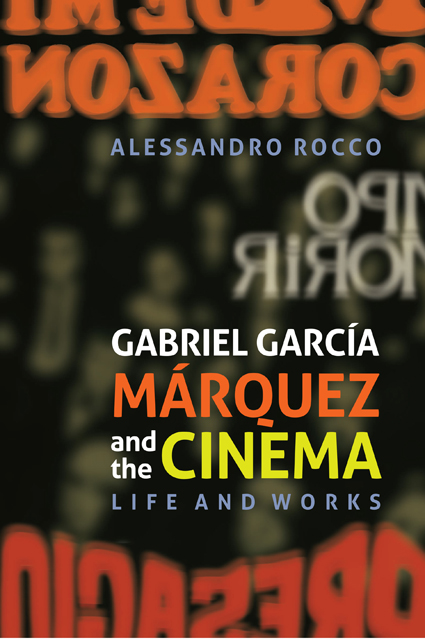Book contents
- Frontmatter
- Dedication
- Contents
- List of Illustrations
- Acknowledgements
- Preface
- 1 The Cinema in the Life of García Márquez
- 2 Tiempo de morir
- 3 Films from the 1970s: The Ghosts of Realism
- 4 Screenplay and Revolution: ¡Viva Sandino!
- 5 Magic Realism in the Cinema
- 6 Six Episodes for Cinema and Television: Amores difíciles
- 7 Con el amor no se juega
- 8 The Fantastic on Television: Me alquilo para soñar
- 9 History and Tragedy: Edipo Alcalde
- Afterword: Works by García Márquez Adapted for the Cinema
- Bibliography
- Index
4 - Screenplay and Revolution: ¡Viva Sandino!
Published online by Cambridge University Press: 24 February 2023
- Frontmatter
- Dedication
- Contents
- List of Illustrations
- Acknowledgements
- Preface
- 1 The Cinema in the Life of García Márquez
- 2 Tiempo de morir
- 3 Films from the 1970s: The Ghosts of Realism
- 4 Screenplay and Revolution: ¡Viva Sandino!
- 5 Magic Realism in the Cinema
- 6 Six Episodes for Cinema and Television: Amores difíciles
- 7 Con el amor no se juega
- 8 The Fantastic on Television: Me alquilo para soñar
- 9 History and Tragedy: Edipo Alcalde
- Afterword: Works by García Márquez Adapted for the Cinema
- Bibliography
- Index
Summary
The films analysed in the previous chapter have shown that, during the second half of the 1970s, García Márquez viewed the cinema as an explicitly political means of communication, among other things, and this also emerges from other experiences. In 1977, for example, while in Caracas, García Márquez told the press that he wanted to produce a screenplay based on the reality of the Panama Canal. The author, a friend of the president, General Omar Torrijos, had been a member of the Panamanian delegation in the negotiations which led to the signing of a new international treatise regulating jurisdiction over the canal. The film, which according to the author was to be made by the militant Greek director Costa-Gavras and produced by the Instituto de Cine Panameño, was designed to present to public opinion worldwide the reasons why the Panama government wished to assert its sovereignty over the canal, sustaining an international campaign, aimed in particular at the United States, in favour of the government’s requests concerning the canal’s management. It does not appear that the project ever went beyond the public declaration of intent.
On the other hand, a documentary did see the light of day in 1979, shot by the Mexican director Jorge Fons, in which García Márquez was credited as a collaborator in the screenplay. This is Así es Vietnam, a documentary that ‘traverses the period of military intervention in Vietnam from 1955 through to the end of the war in 1975’, made in a decidedly journalistic style which, as we know, was close to García Márquez’s heart.
More significant still, in terms of his involvement in conceiving a politicised cinema, was the text that García Márquez wrote in support of the struggle of the Frente Sandinista de Liberación Nacional (the Sandinista National Liberation Front) in Nicaragua, with the original title ¡Viva Sandino! The screenplay, written with a possible French production in view, was subsequently donated to Nicaragua, with permission for it to be published, from 1982 onwards, in various editions and under different titles, as El secuestro or El asalto, and the explanatory subtitle el operativo con que el FSLN se lanzó al mundo.
- Type
- Chapter
- Information
- Gabriel García Márquez and the CinemaLife and Works, pp. 87 - 92Publisher: Boydell & BrewerPrint publication year: 2014

